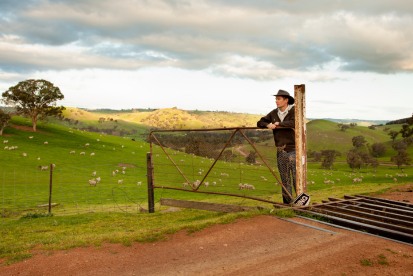2021 has been one of the best financial years for farmers. With better than average production and rapidly increasing land value, generational farmers have found themselves in a wealthy situation. And this creation of wealth has accelerated some major life and farming decisions regarding succession and investments.
At the same time, 2021 has also been one of the most expensive years for farmers, with the rising cost of everything from insurance to fertilizers and machinery. This unique combination of wealth and expenses has thrown many farmers off-budget.
In our interview with Rob Grima - a farm business management consultant at Planfarm, he shares strategies for farmers to navigate these fluctuating market conditions and protect the wealth created through financial discipline and cost management for the future.
Practising financial discipline even in times of healthy profits
2022 has seen the worst trading conditions in a long time: amongst many other inputs, the cost of fertilizers, too, has tripled due to COVID-related availability issues. Therefore, there is no doubt that farmers have spent well more than they had initially budgeted.
Even the spending pattern has differed. Usually, by June, most of the spending occurs, and most farmers would have used up 80-90% of their overdraft from the bank. But, this year, many farmers have used their cash (from the profits earned in 2021) to fund the crop. And there's also a cash injection in July because several of them have deferred grain income.
Therefore, although you have more cash than expected, you also have spent more than initially planned! This is why, even in good times, it is imperative to practice healthy financial discipline.
And while previously, financial discipline was automatically enforced and governed by the bank in terms of overdraft spending, this is largely not the case in 2022. With farmers using their cash instead of the bank overdraft, there is a lack of governance, accountability, and discipline regarding spending.
It can be challenging to recognize these changes in spending and cash flow from April to June because you are busy ensuring that the crops are in the ground. However, most expense-related decisions are in place by July. This means there's more knowledge now than there was while making the budget in January and February. Therefore, July is the time to start thinking about where you are at financially. And then map what you can do from that point to correct the ship or make the most of the opportunity that's presented itself.
To achieve this, you must be prepared by continually quantifying your position. The only way to do that is to keep your cashbook up-to-date and continually understand how far away from the budget you've drifted, positively or negatively. Either way, you need to understand the position that you're in so that you can start scenario planning about what might be the likely outcome. And that either gives you comfort or discomfort, and you need to build a plan of action to manage accordingly.
The strategy is to become your governor and continue to practice that financial discipline even when the bank isn't governing you. This is imperative because, although costs continue to be extremely high, profit expectations are only reasonably optimistic. Therefore, financial discipline is a must even during seemingly good times!
According to Rob,
"The true difference between those businesses that are genuinely in the top 25% pretty much across the board [is that] they know when not to spend the money, but they also know when to spend the money."
Planning for cost management in 2023
Financial discipline isn't just about keeping your cashbook up-to-date or following your current budget. It is essential to plan, forecast, and budget for the future.
2022 saw a lot of manufacturing and shipping issues due to COVID-related lockdowns in China. Although, as per trends, the availability of products imported from China, particularly fertilizers, should have improved, it seems doubtful now. The imports will likely be deferred again, at least for another year. Therefore, just like in 2022, a fair chunk of the cost will still be there next year.
There will be more certainty regarding this towards the end of the season, as import-related decisions will be in October and November.
However, as per Rob, farmers should be preparing for a higher cost year again in 2023 compared to the long-term industry average due to increased prices across the board. From insurance to interest rates, consultant fees, and particularly repair expenses, the cost for everything has increased by quite a margin.
Therefore, despite a great decade and an exceptionally great couple of years for many farmers, you should play highly conservatively and maintain strict financial discipline. This is because although profits have been good, costs are extreme, and there is pressure everywhere. All you can do is react to the persistent environmental and economic conditions.
Though 2022 appears to be performing well, due to the extreme volatilities the season outcome is still unknown. Moreover, some of these conditions and trends are expected to continue to 2023. Therefore, you must be prepared by maintaining your balance sheet strength through strict financial discipline despite these fluctuating market conditions.
For more information, listen to episode 10 of our podcast Boots Off Log On! here.
Or visit Planfarm.




